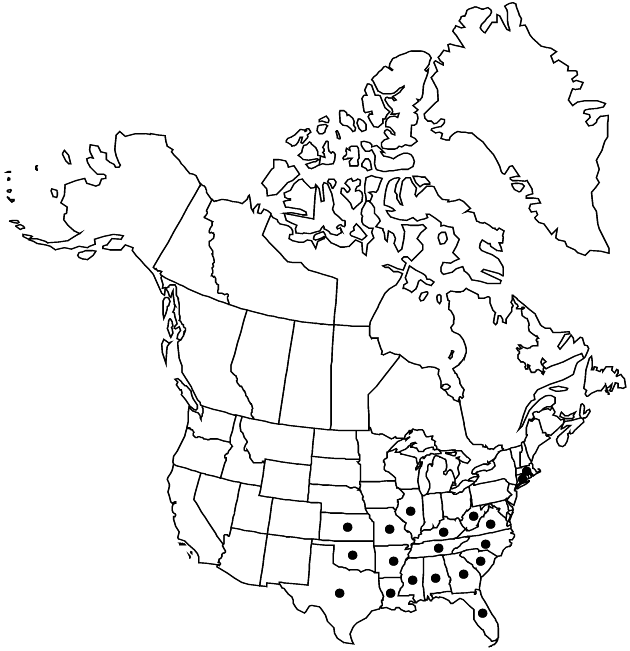Coreopsis pubescens
Sketch Bot. S. Carolina 2: 441. 1823.
Perennials, 20–70 (–90+) cm. Aerial nodes proximal to first peduncle usually (5–) 6–12+, distalmost 1–3 internodes 4–6 (–10+) cm. Leaves: mostly cauline on proximal 2/3–7/8 of plant heights; petioles 2–10 (–25+) mm; blades usually simple, rarely with 1–2 (–3+) lateral lobes, simple blades or terminal lobes lance-elliptic to oblanceolate or lanceolate, 15–60 (–80) × 2–25 (–35) mm. Peduncles (7–) 12–15+ cm. Calyculi of lanceolate to lance-linear bractlets 3–7 mm. Phyllaries lanceovate to lanceolate, 5–8+ mm. Ray laminae yellow, 12–15+ mm. Disc corollas 4.6–5.4 mm, apices yellow. Cypselae 2.5–3 mm, wings ± spreading, ± chartaceous, entire. 2n = 26 (+ 0–2B).
Phenology: Flowering (Apr–)Jun–Aug(–Sep).
Habitat: Sandy soils, granite outcrops, open pine-oak woods, ditches and roadsides, other disturbed sites
Elevation: 30–1000+ m
Distribution

Ala., Ark., Conn., Fla., Ga., Ill., Kans., Ky., La., Mass., Miss., Mo., N.C., Okla., S.C., Tenn., Tex., Va., W.Va.
Discussion
Bushy to wiry, nearly glabrous plants with leaf blades mostly simple, mostly oblanceolate, and 2–15+ mm wide and with relatively small heads, florets, and fruits from coastal Mississippi and included here in Coreopsis pubescens may merit recognition as C. debilis Sherff or C. pubescens var. debilis.
Selected References
None.
Lower Taxa
"broader" is not a number.